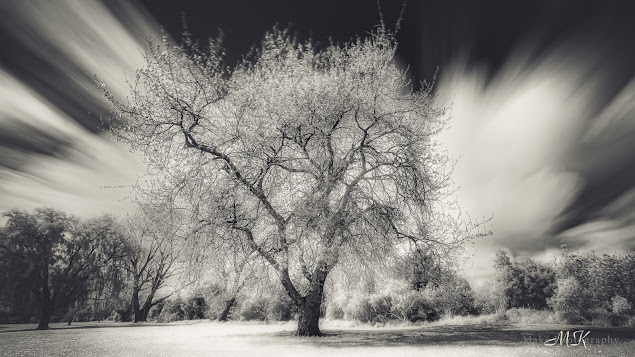Exploring New Tools - Magic Lantern
This will be the third summer I have photographed in infrared. In the past two years I have noticed a trend. I am not sure if it is specific to infrared or more based in my nature. I find my interest in photographing in infrared wanes over the winter, comes to life in spring (with a bit of effort). Then in late summer or autumn I come into the possession of a new piece of gear, but too late to really get familiar with it.
The first summer, after exploring the possibilities of infrared, I managed to find a 77mm 720nm filter. The 77mm thread allowed me to use better lenses with a wider range of focal lengths, but with shipping delays it only arrived in April. Then last autumn, through a bizarre chain of events, I purchased the canon 6D which spawned this blog.
Just because it hasn't been the greatest light to photograph with, it doesn't mean I have been idle. Quite the contrary. I have been getting to know the 6D better, the positives and the things I miss from my Canon 80D. I have also been looking at the possibilities, how the negatives can be lightened, reduced.
Two drawbacks that were highest on my list were:
- Extending exposures past 30 seconds through the use of a bulb timer
- Brightening the live view screen to make focusing easier
Then one day, watching YouTube videos, I came across a video on the use of magic lantern on older DSLR's. Magic Lantern is an additional firmware layer that sits on top of the standard Canon firmware. Magic Lantern enables features that Canon have disabled or provides new code to mimic features provided in later camera models. Now this doesn't come without risks and this is laid out on their website. But most of the risks are around those features which work the camera harder than it was designed to. The features I was interested in though do not push the camera any harder, so I thought the risk was worth it.
After a month using the Magic Lantern software, there are three great features which I have found very useful. Those being the bulb mode features, the additional controls in Live View mode and an unexpected feature, focus peeking. The image below used all of these features, with an exposure time of three minutes.
So if you are using a Canon DSLR camera that is supported by the Magic Lantern software and you have issues similar to mine, then maybe spend some time considering if you could benefit from this. I hope you found this article helpful, and I look forward to posting more over the coming months as I get to know this camera better. Only a week to go till spring :)



Comments
Post a Comment